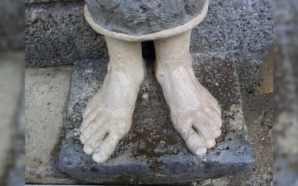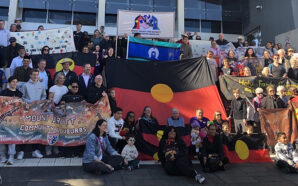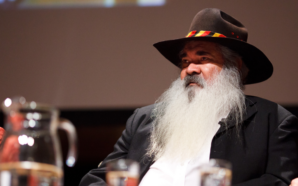This article was originally published in the May edition of the Melbourne Catholic Magazine.
Fifty people were killed and dozens were injured on 15 March when an Australian gunman opened fire at the Al Noor and Linwood mosques in Christchurch, New Zealand. As if that wasn’t horrific enough, the killer livestreamed his actions via Facebook, exposing the world to his gross disregard for life as it occurred.
Facebook’s inability to stop the live streaming more quickly and then its inability to prevent its subsequent copying and sharing, which reached into the millions, added to the grief and anger in the community. It also put into sharp focus again the role and responsibilities of social media—the users, those who manage the platforms, and its impact across the global community.
It is clear social media plays a significant role across the globe—there are 3.5 billion active users worldwide. In Australia we have a population of almost 25 million. Of that, 18 million are active social media users and nearly 22 million are active internet users. As of January, Facebook had 16 million monthly active users; YouTube had 17 million; Instagram, 9.7 million; Twitter, 2.56 million; and LinkedIn had 11 million registered members. Those numbers are significant, and the trend only seems to be increasing.
The Catholic Church has for some years encouraged its members to engage in the online digital space. This is where the people are and so we need to go out and meet them there, sharing the Good News and drawing them to Christ. In his 2014 message for World Communications Day, Pope Francis spoke of how modern forms of media and digital technology offer ‘immense possibilities for encounter and solidarity’: ‘Good communication helps us grow closer, to know one another better, and ultimately, to grow in unity,’ he said.
In the same message, however, Pope Francis also warned of those aspects of modern technology that marginalise and exclude, where the speed of communication ‘exceeds our capacity for reflection and judgement’, and ‘does not make for more balanced and proper forms of self-expression’. ‘The variety of opinions being aired can be seen as helpful, but it also enables people to barricade themselves behind sources of information which only confirm their own wishes and ideas, or political and economic interests,’ he said. In light of the Christchurch massacre, the ability with which social media and the internet can be used to coordinate, inflict and spread violence, destruction and hatred is also of increasing concern.
In a recent forum hosted by Catholic Social Services Victoria, 20 representatives from member and affiliated organisations gathered to discuss more deeply the impact of social media and information technology, particularly within the context of their work in social justice. How effective is the use of social media in advancing social justice issues? How can we use social media and information technology to enhance our work in serving vulnerable and marginalised people? How do we encourage and facilitate moments of encounter, understanding and solidarity? To paraphrase Pope Francis: How can our digital communications be at the service of an authentic culture of encounter? How can we truly draw close to one another? How can we be ‘neighbourly’ in our use of communications media and in the new environment created by digital technology?
In addressing these questions, the group looked at the impact of social media and information technology, identifying the strengths and weaknesses, exploring the opportunities for what’s possible if it is used well, and shedding light on potential threats. Given the broad nature of these questions, they were explored within the context of Catholic social services and the role of its members in being a living sign of the Gospel message—serving with love the most vulnerable and marginalized members of our community locally, nationally and internationally.
Those gathered spoke of the way in which social media and the internet had increased their ability to network and connect with like-minded organisations and groups of people across the world. In so doing, they could share information, resources, knowledge and expertise with each other (and the broader community), which could then be shared and applied within the local community context. According to Josh Lourenz, from the Catholic Alliance for People Seeking Asylum, this increased connectivity and coordination of information, and the speed with which it can be shared, has improved its ability for informed and effective advocacy. Brittany Dupree from Sacred Heart Mission shared how the organisation is using social media in general to reach new audiences and grow its brand.
Paul Smyth from the Australian Catholic Social Justice Council provided a concrete example of how a group that started online, and of which he’d been a part for years, eventually met in the local library in order to address the issue of homelessness and emergency housing in their area. He emphasised the positive role social media had played in this call to action—in bringing people together, in real life, around real issues, where something practical could be done and was done.
Social media and information technology have also increased the ability to give a voice to those who might have otherwise remained silent and forgotten. The Twitter account @HomelessInMelb has over 2700 followers and raises awareness by sharing stories from people who are themselves homeless or have been in the past. Another account, @IndigenousX, with more than 46,000 followers, passes to a different Indigenous person each week so they can share news and information that is important to them.
In the forum, Michael McVeigh of Jesuit Communications encouraged people to follow Twitter and Facebook accounts of those individuals and groups that hold different viewpoints in order to deepen knowledge and understanding. This also acts as a countermeasure to one of the greatest risks and challenges of social media and digital technology: that we create virtual echo chambers, or silos, which reinforce our own views, to the exclusion of all others. Indeed, as Pope Francis warned in his 2014 World Communications Day Message, ‘The walls which divide us can be broken down only if we are prepared to listen and learn from one another. We need to resolve our differences through forms of dialogue, which help us grow in understanding and mutual respect.’
But can this be effectively achieved with social media and information technology? Are these digital technologies really the way forward when it comes to building understanding and fostering shared human experiences and connection? Put under the spotlight, it doesn’t take long to realise that the impact of social media and information technology is a double-edged sword—that for every positive impact, there is also a negative.
A case in point is the speed, accessibility and extensive reach and impact (which had previously been noted as positives) of the violent footage that live-streamed across the world from Christchurch. Where social media can provide a platform for increased diversity of voices, for increased collaboration and knowledge, similarly it has provided a space for people to increasingly abuse, ‘troll’, and cause hatred and division. The ability for nuance and tone in conversation, the opportunity to engage in serious listening and calm dialogue, and the ability to discern what is true or false as opposed to opinion, seem to be fast-diminishing traits of social media usage.
Within the Catholic social services context, forum members spoke of examples of social media being used to dig up and expose past actions of people who had come out of jail and were attempting a fresh start, or of those who were recovering from drug or other addictions. It is fast becoming apparent that forgiveness, which is one of the Gospel imperatives, is in short supply in the online realm.
During the forum Matthew Howard, a representative of Redemptorists Australia and New Zealand, stressed the need for increased education around the nature of social media platforms within families, schools and within the broader community. He explained that it is important to understand that social media platforms are for-profit, commercial entities, which function ultimately as advertising agencies. Rather than thinking of them as neutral, social, democratic spaces, we need to understand that the content is in the hands of a few very powerful people.
It is clear that the internet and social media platforms are not going away. And so it is important to delve deeper into the very nature of this space and to ask some questions: who is in control of the content placed and shared online? Who and how do we regulate this space? How can we ensure everybody has equal access to the positive aspects of digital technology? How effective is it in building up humanity and in bringing people to Christ? How do we ensure the positive impact outweighs the negative?
In the concluding paragraphs of his 2014 message, Pope Francis said that, ‘while the drawbacks are real, they do not justify rejecting social media. Rather, they remind us that communication is ultimately a human rather than technological achievement.’ Fully equipped with the knowledge of the space we’re in, and understanding how to use it effectively, may ‘our communication be a balm which relieves pain and a fine wine which gladdens hearts.’
At the end of the day, we must not lose sight of our purpose in drawing people to Jesus Christ.
For more statistics on social media use in Australia, see: www.wearesocial.com/au/blog/2019/02/digital-report-australia and https://blog.hootsuite.com/social-mediastatistics-for-social-media-managers.
Fiona Basile is a Melbourne-based freelance photojournalist with a passion for words, photography, food and travel.
With thanks to Melbourne Catholic Magazine and the Archdiocese of Melbourne.








